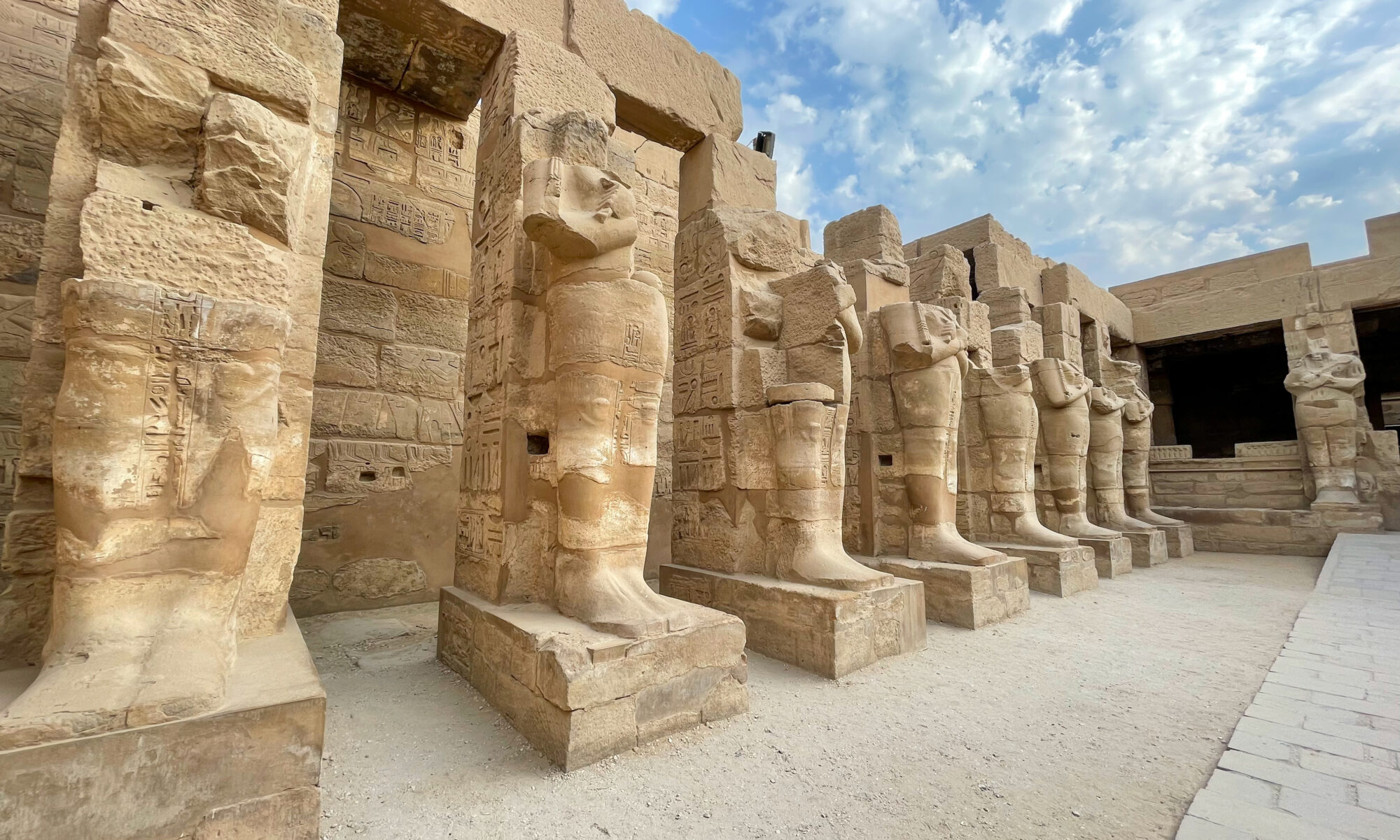When in Luxor, we visited Karnak and the Temple of Luxor on the east bank and were, yet again, amazed at what we saw.
Karnak and Luxor Temple are situated on the east bank of the Nile, which means they are not tombs or mortuary temples, but instead dedicated to the gods and pharaohs. We started our tour of the temples later in the day so that we could see Karnak during sunset and Luxor Temple at night.
Karnak Temple Complex
The Karnak Temple Complex is one of, if not the largest religious sites in the world, covering about 2 square kilometers. Karnak is home to the famous Great Hypostyle Hall, a single room with an area of 54,000 square feet and containing 134 columns. The complex began construction around 4000 years ago, and continued for over 1000 years.
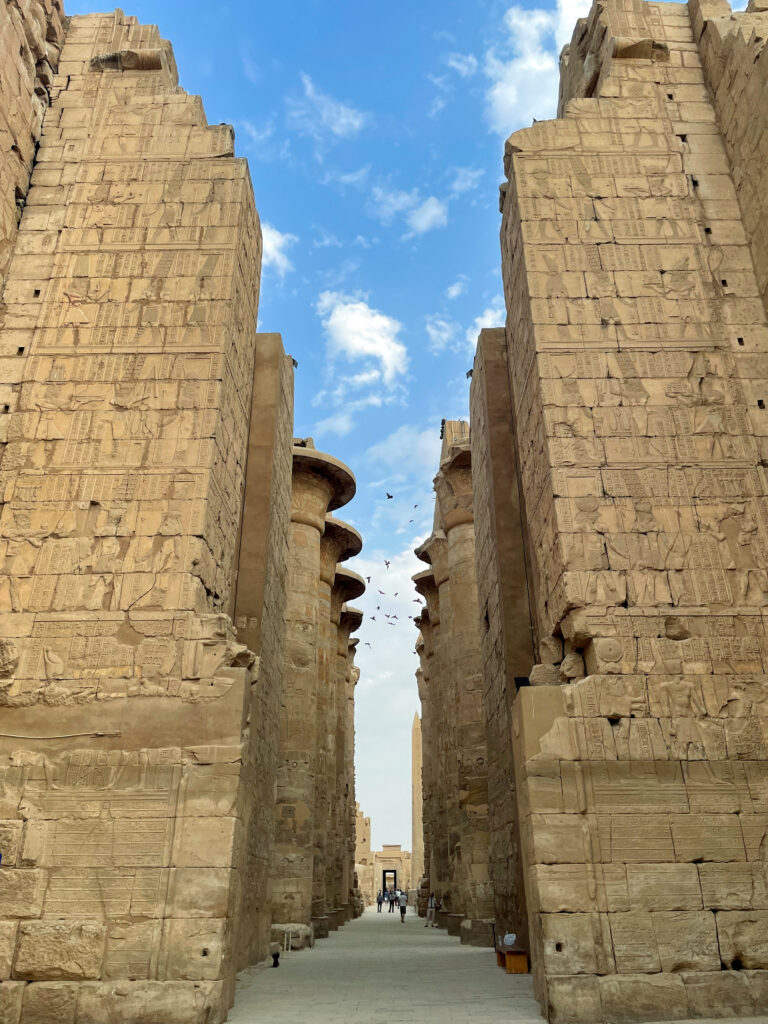
Everything about Karnak is impressive. Walking through the pillars of the Great Hypostyle Hall feels like walking through a forest. The complex is sprawling with small temples and sanctuaries everywhere. This is a place to get lost if you have the time.
Because Karnak was continuously added to, you have multiple different pharaohs from various dynasties putting their own marks throughout the complex. One such pharaoh was Queen Hatshepsut. Hatshepsut’s two obelisks (one still standing) still have her cartouche (a rarity) but elsewhere, her image was removed.
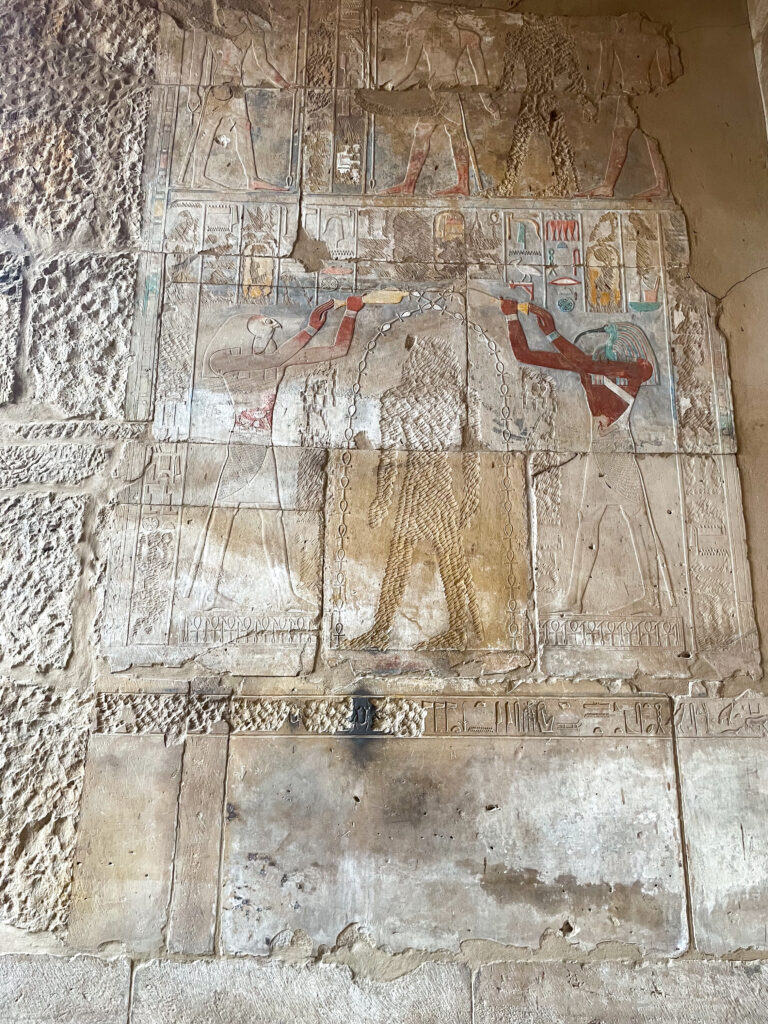
Towards the outside of the complex we visited the reconstructed Red Chapel of Hatshepsut as well as the White Chapel built during the Middle Kingdom.
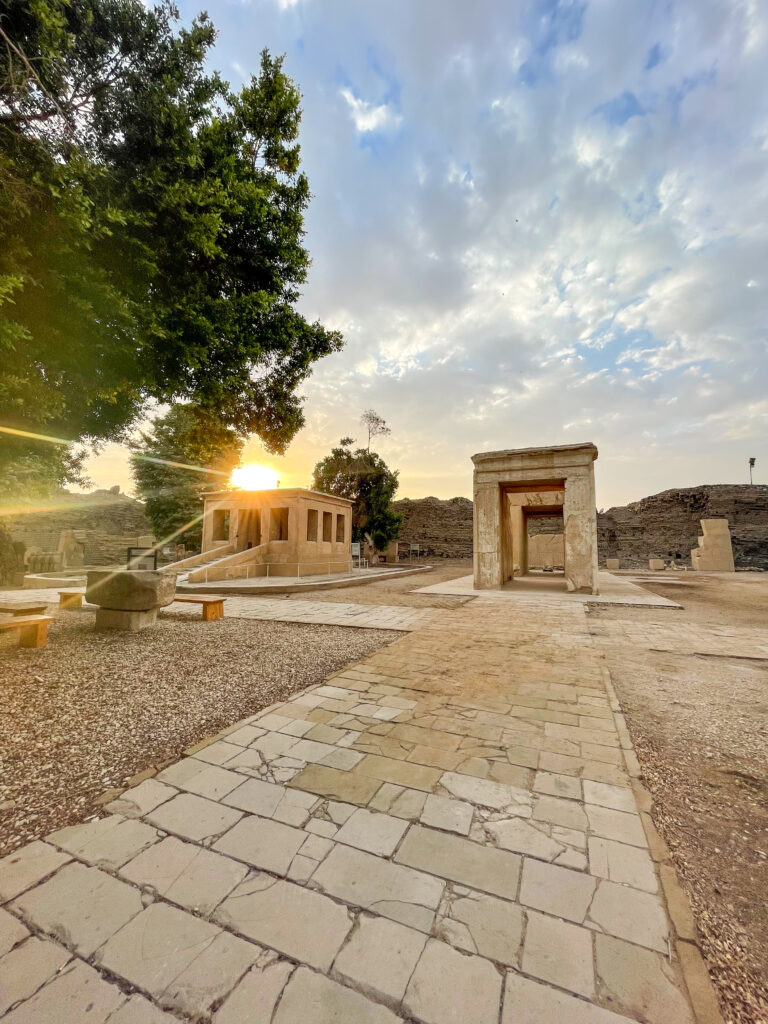
As we were leaving Karnak we were able to watch the sunset from the dock where the Nile used to reach the temple complex. Karnak is certainly somewhere I wish we could have spent a whole day at.
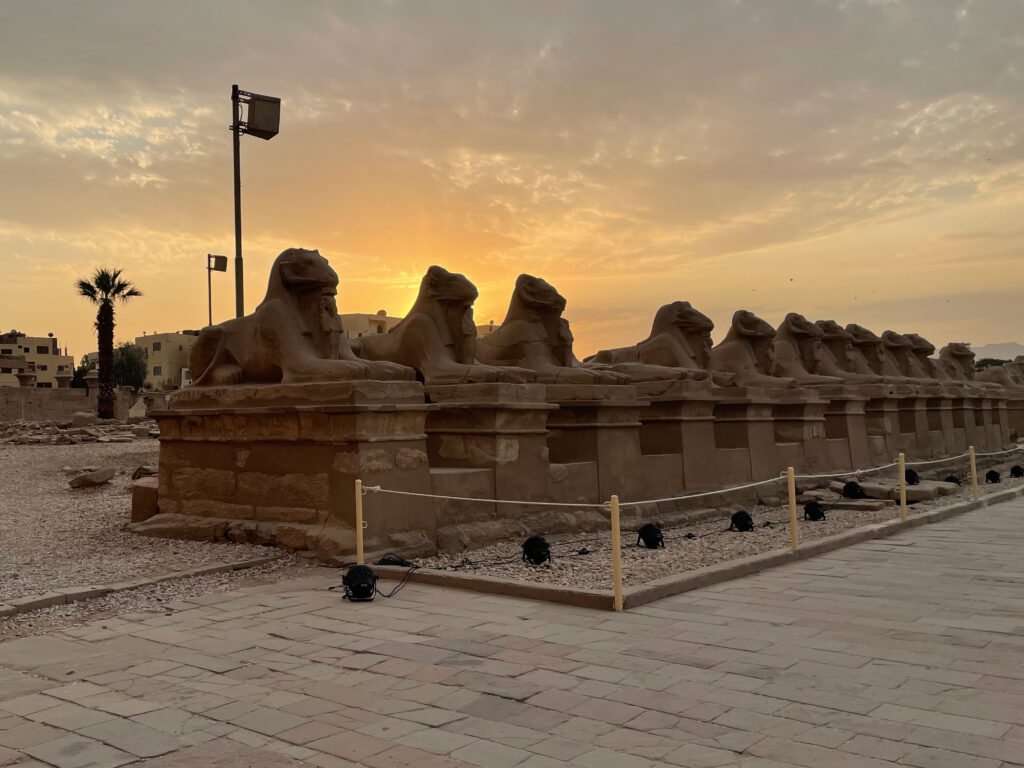
Temple of Luxor
Temple of Luxor is the oldest actively used building (excluding archaeology and tourism) with over 3400 years of religious use. Originally dedicated to the pharaohs, the Romans converted a portion of the temple in to a chapel, and finally into a mosque.
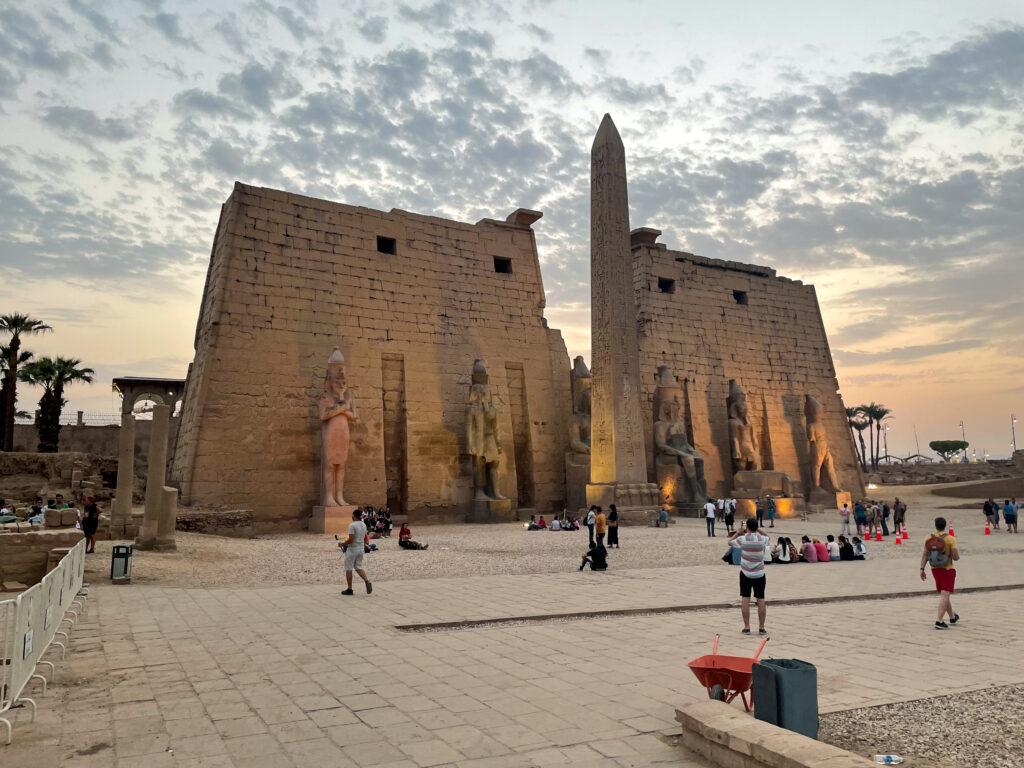
By the time we got to Luxor Temple it was already starting to get dark. This allowed us to see the temple at night all lit up, which was a different experience then all of our other tours. This made taking pictures more difficult, but the experience was well worth it.
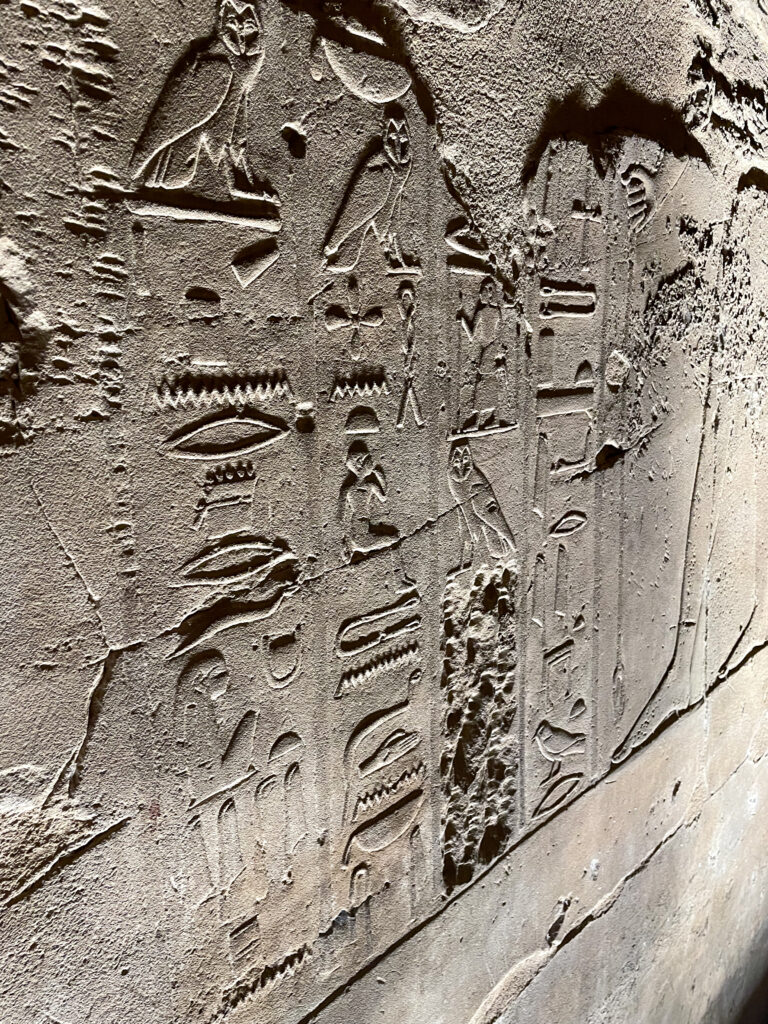
When we were in Egypt they were preparing to reopen the Avenue of Sphinxes, so there was a group practicing for the opening ceremony at Luxor Temple. It was neat to see the preparations of the event which will be a big deal for Egypt.
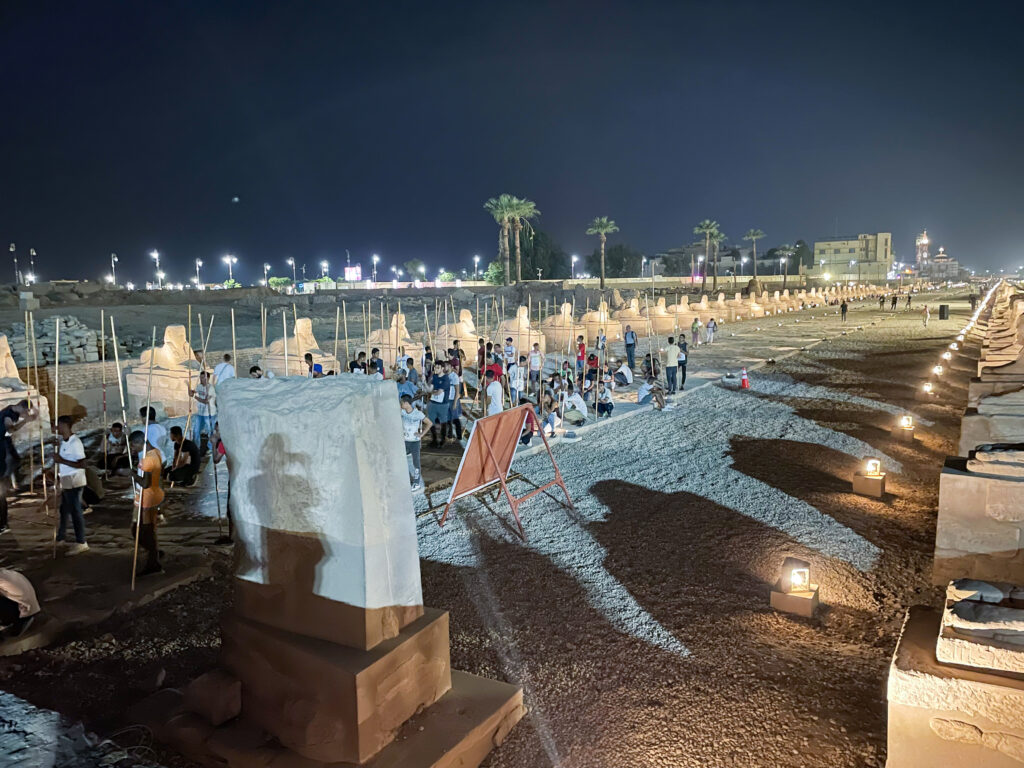
The Temple of Luxor might not have been as big as Karnak, but still very impressive, especially at night. Just as everywhere else in Egypt, everywhere you looked was something interesting or mind-blowing.

